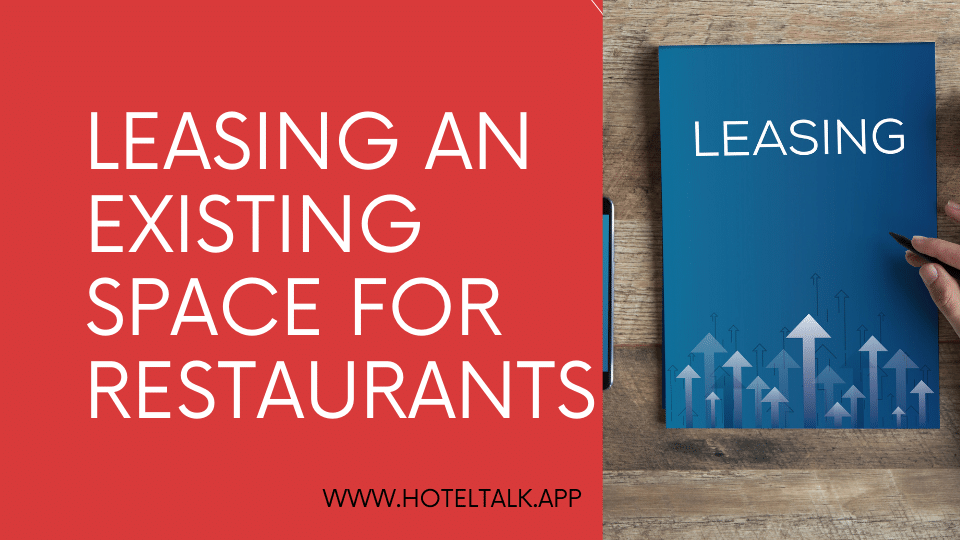The most affordable option for first-time restaurant owners is to lease space. In some cases, the site simply isn’t for sale. Again, a good real estate broker will save you time during the site selection and lease negotiation process. There are real estate professionals in every city who specialize in restaurant locations or specific trade areas, and their knowledge is well worth their fee. In fact, the fee (usually 4% of the total lease amount) is frequently paid by the property owner. To avoid misunderstandings, double-check this before starting the negotiating process.
Did we just say “cheapest option”? Leasing costs are relative, just like buying a home. In a market where anything over $100 used to be unthinkable, higher-end XYZ restaurants now pay $200-plus per square foot. Part of the reason for price increases is that large, successful MCOs are entering these urban markets, and property owners are aware that they can charge these tenants more. A Lower East Side location, on the other hand, can be had for the relatively low price of $75 per square foot.
Before signing the lease, consult with an architect or a foodservice consultant. Yes, their services can be costly, but it is worthwhile to have a realistic idea of whether the space can be transformed into what you envision. Keep your designers and contractors happy by being completely honest when compiling your estimates. It is time consuming and costly to request preliminary plans, only to have them continually reduced because your budget does not fit the project. A lease price is expressed in cost per square foot, just like a purchase price. Because you intend to run a successful long-term business, request a lease for at least five years. That way you know the exact monthly amount to budget for, and you know it won’t increase before then.
In negotiating for space, you should ask about:
- The exact size of space available, including parking
- The exact price, in dollars per square foot
- The amounts of finish-out allowances, and exactly what is included in them
A finish-out or build-out allowance is money given to a new tenant to finish the interior of the space with paint and fixtures of their choosing. Tenant improvement dollars are another name for this. If the landlord pays for finish-out, the actual monthly rent will be higher than if the tenant pays for it. Who should foot the bill? That should be determined by your cash flow situation. To be honest, most new restaurants require cash to get through the first few months before turning a profit. If this is the case, try to have the landlord cover the finishing costs.
If you’re a good negotiator, put your skills to the test by offering to do the finishing work in exchange for a much lower rent for the first six months to a year. We’ve also heard of restaurateurs doing their own finishing in exchange for free rent for the first three to six months. It all depends on how badly the landlord needs a tenant in the space.
One important precaution is to consider the tax implications for spending money on and/or doing work to someone else’s property. If the landlord pays for the improvements, the contract should clearly state that the landlord owns them. At income tax time, you cannot depreciate the value of these improvements because they don’t belong to you. You also will be paying more income tax if you have fewer up-front expenses to write off in the first year. The basic depreciation rates are:
- 5 years for personal property (furniture, fixtures and equipment)
- 15 years for land-related improvements (e.g., adding a parking lot)
- 39 years for real property
For obvious reasons, it is best to allocate as much of the build-out cost as possible to the personal property category. Accelerating depreciation is a legal and acceptable way to reduce your taxable income and can be very beneficial in the first years of business. Furthermore, a technique known as cost segregation allows some assets (electrical, plumbing, HVAC) to be valued as both personal and real property. A tax professional can assist you in determining the correct ways to depreciate these items.
Another time to request rent concessions is right after you move in, when improvements are being made. Because the property is not yet open, many landlords will grant a 60- to 90-day grace period before the first rent check is due. Even with this reprieve, keep rent in mind. Overruns and delays can stymie your progress at any time. You should be able to pay the rent if you are technically in the space.
